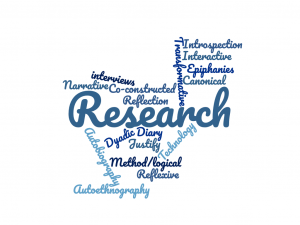
Gif created by ctrades. Person image free at Clipart Library
I had always thought tweeting was weird. And blogging, well, I’ve read a few blogs written by travelling friends but most of the blogs I go to are recipe blogs and I just want the good stuff – the recipe. It never occurred to me that tweeting could be a way to mine information or that blogs could actually be a source of educational inspiration. On top of that, it’s a way to connect with educators you don’t know yet. I didn’t understand that there was an educator/learner culture on social media. Kind of like Tinder for learners. And to belong, you have to tweet and blog to read others’ tweets and blogs because they are doing the same thing – looking for inspiration and connection with like-minded individuals. If you don’t tweet or blog, you will lose that connection.
Once you start, there is just SO much information coming through. Like reading a newspaper – you don’t have to read every little thing, but you need to scan to look for the ‘good bits’ for where you are right now. TweetDeck and Feedly were easy to set up and use as an organization system. Hootsuite will get consideration next week even though I am happy with my current two systems. I am starting to find a voice on Twitter, and I am working on my voice in blogging. If some future (or current) MEdTech student finds my blog helpful, great! If not, it doesn’t matter because I am finding it helpful. Putting my thoughts in writing has always been useful for me but blogging about it makes me consider my word choice a little more carefully and makes me be a little clearer. Something interesting is that the quote I retweeted from another educator (below), I decided to research today. Weirdly enough, it is an internet quote with no background! No one can track down the originator, so it has become somewhat of an internet urban myth. Another lesson in research and attribution. Should I have contributed to the confusion by retweeting and not attributing properly?
THIS!!! THIS is how I (try to) teach AND why I am finding the start of my Master’s (finally) to be both exhilarating and exhausting, right #tiegrad? This is how we are being taught, and it is a journey of discovery. #inquiry https://t.co/OWOW003Gqc “The best teachers are those who show you where to look, but don’t tell you what to see.”
― Alexandra K. Trenfor— ctrades (@ctrades2) July 12, 2019
And of course, you need to make your blog pretty, so I spent about an hour making a gif I wanted for my last blog. I used the Creative Commons to find editable scrabble pieces (though there wasn’t a ‘C’), edited the ‘G’ and ‘M’ to a ‘C’ through Photoshop, made 32 images in InDesign, and then used an online gif maker, EZGif, to create my scrabble gif. I wanted to use the logos of the social media in a gif, but I checked the brand guidelines for Twitter and it states you cannot animate it. Actually, the brand guidelines for even the use of the Creative Commons were very restrictive, so I decided to err on the side of being too careful and did not include them on my blog. Too bad, so sad, but rules are rules. (And then, I couldn’t let this post aimed at my Social Media course be without a gif, so I spent half an hour making this one.)
My last (long) post was about all the connections I’ve been making based on our Research methods course. After a quick meeting with Valerie on Friday, I had another connection made. So much of my self-directed learning has been through experimentation and online tutorials and videos found primarily on YouTube and a school subscription to Lynda. I was really using those websites as a learning community but in the static, traditional lecture style where teaching and learning stay on their assigned separate sides. At school, our students are good networkers within our classrooms during class and through email and through google docs and classroom when outside of class. They also make use of online tutorials and sites they find or we direct them to. Could I curate and moderate (with help) an online learning platform where teachers AND students contribute? Create a learning community that would connect our students with incoming students (an area where I have concerns, particularly in mathematics), and perhaps students outside our school community? Our classes already have online teacher resources, but could we get the students to share their work, especially those with errors that would help others? Could I get teachers to share their work outside our organization? The site structure around concepts/content/skills would be complicated, and then there would need to be some specific diagnostic tools created as well as some motivational interactive learning tools, specifically made to develop mathematical inquiry skills and to use math in real-life problems. Altogether, that could potentially be a Masters Project. Hmmmm.














Recent Comments